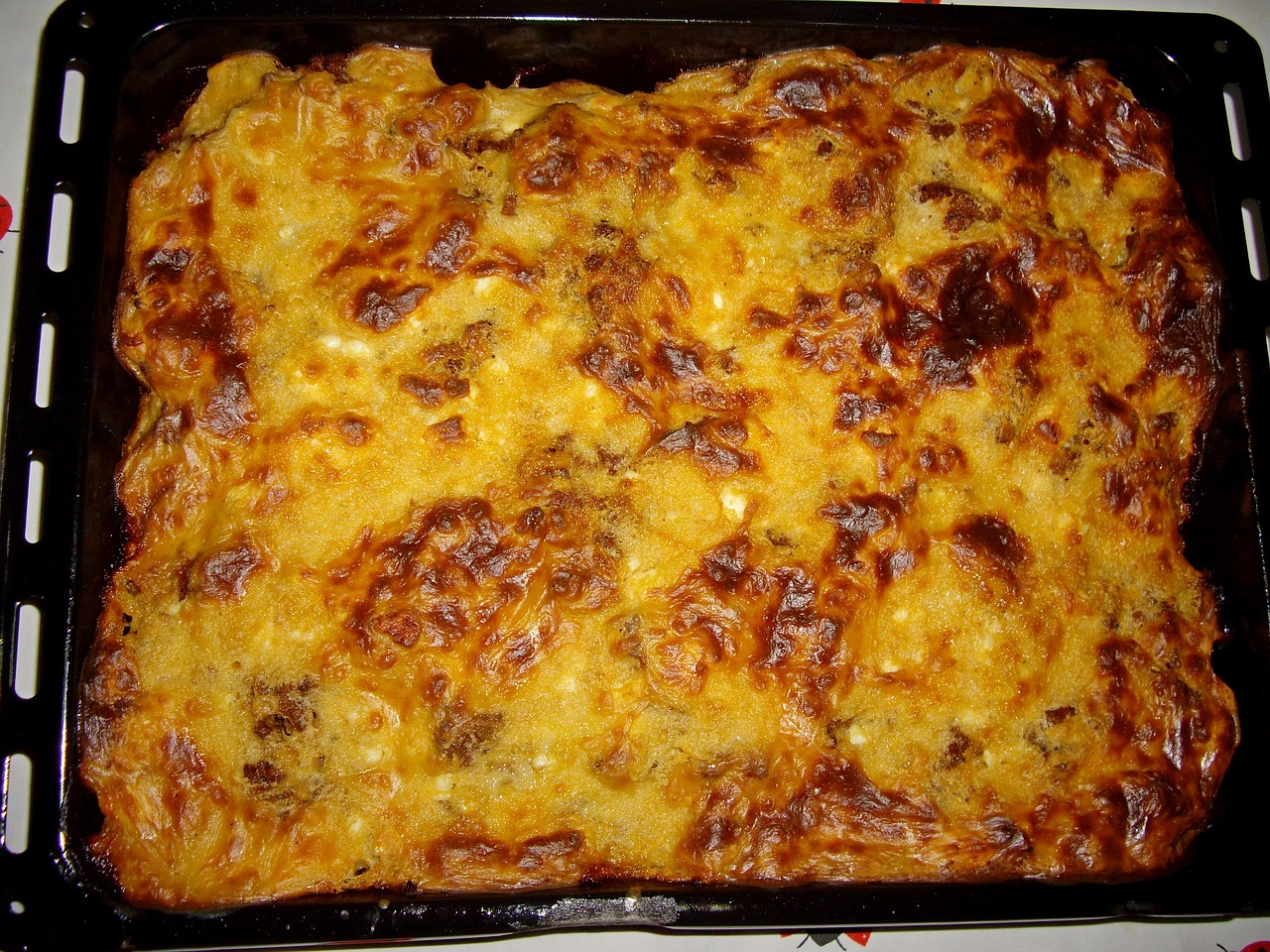What’s the Key to a Flavorful Gourmet Greek Moussaka with a Creamy Béchamel?

Take yourselves on an aromatic journey to the Mediterranean as we unravel the secrets behind a gourmet Greek Moussaka with a creamy béchamel. This scrumptious and hearty dish, a highlight of Greek cuisine, is a culinary wonder that brings together diverse flavors harmoniously.
Unleashing an orchestra of flavors, Moussaka is an enticingly layered casserole dish made of fried aubergines or potatoes, a flavorful meat filling, usually lamb or beef, and topped with a rich béchamel sauce.
A découvrir également : Can You Bake a Gourmet Almond and Pear Tart with Frangipane Filling?
Now, let’s dive in, explore, and unveil the key to nailing this Greek classic in your kitchen.
Unlocking the Flavor in your Moussaka
The first step in mastering your Moussaka is to ensure a melange of robust flavors. To achieve this, you must pay attention to the little details in your preparation.
Dans le meme genre : What Are the Techniques for an Authentic Argentinian Asado?
Start with selecting the freshest ingredients. The aubergines and potatoes need to be at their freshest, the meat must be of premium quality, and the herbs and spices should be chosen with care. Remember, quality ingredients are the foundation of a mouthwatering Moussaka.
Marinating the meat enhances its flavor. Use a blend of spices and herbs like cinnamon, nutmeg, and oregano, along with garlic and onions. Allow the meat to marinate overnight to ensure these flavors permeate completely.
Also, take your time to cook the meat filling until it’s richly browned and caramelized. This is your opportunity to create a base of deep, savory flavors that will permeate through the layers of the Moussaka.
Acquiring the Perfect Texture
A gourmet Moussaka isn’t just about flavors; the texture plays a crucial role too. It’s about creating a contrast between the creamy béchamel, soft aubergines or potatoes, and a meaty filling.
Aubergines are a popular choice for Moussaka. To achieve a melt-in-your-mouth texture, fry or grill the aubergine slices till they are golden. If you opt for potatoes, ensure they are thinly sliced and lightly browned before layering.
The béchamel sauce’s consistency is also crucial. It should be creamy and thick but pourable. The sauce forms a golden crust when baked, offering a delightful contrast to the soft layers beneath. To make béchamel, you need patience. Whisk the mixture continuously on low heat until it becomes silky smooth.
The meat filling, on the other hand, should be cooked to a point where it is tender but still retains some bite. It provides a meaty texture to contrast the soft aubergine and creamy béchamel.
Layering the Moussaka: An Art in Itself
Layering is what turns separate ingredients into a unified Moussaka. It’s an art in itself, and doing it right is essential to achieve the perfect balance of flavors and textures in every bite.
Start with a layer of aubergines or potatoes at the bottom of your baking dish. This forms the base of your Moussaka. Next, spread the meat filling evenly over it. Repeat these layers until all the ingredients are used, remembering to save enough aubergine or potatoes for the top layer.
Once you’ve finished layering the vegetables and meat, it’s time for the pièce de résistance – the béchamel sauce. Pour the béchamel over the top layer, ensuring it covers the entire surface. The sauce will bake to a golden, crispy perfection, contrasting beautifully with the soft, succulent layers beneath.
Perfecting the Béchamel: Creamy Goodness
The crowning glory of a Moussaka is its creamy, luxurious béchamel sauce. When done right, it’s a velvety blanket that adds a rich creaminess to the Moussaka, contrasting with the savory meat and vegetable layers.
Making a perfect béchamel requires patience and precision. Begin by melting butter in a saucepan, then mix in flour to create a roux. Gradually add milk, constantly whisking to prevent lumps. Season the sauce with nutmeg, salt, and white pepper.
The secret to an extra creamy béchamel is the addition of egg yolks. Once your sauce has thickened, remove it from the heat and quickly whisk in the egg yolks. This results in a richer, creamier béchamel that beautifully compliments the Moussaka.
Cooking and Serving your Moussaka: The Final Touches
Achieving the perfect Moussaka doesn’t end with assembling the layers. The cooking process is just as important, and so is the way you serve it.
The Moussaka needs to bake at the right temperature to ensure all the layers are cooked perfectly and the flavors meld together. A moderate oven temperature, around 180°C (350°F), is ideal. The Moussaka is done when the top layer of béchamel turns golden brown, and the dish is bubbling at the edges.
Once out of the oven, allow your Moussaka to rest. This cooling period lets the layers set and flavors to meld. Patience is key here; cutting into the Moussaka too soon can cause it to fall apart.
Serving the Moussaka is the final step in your culinary journey. Cut the Moussaka into squares or rectangles, and use a spatula to lift the servings out of the dish. Pair it with a fresh, crisp Greek salad and a glass of red wine for a complete, authentic Greek experience. Your gourmet Greek Moussaka is now ready to impress!
A Taste of Olive Oil: Its Role in a Gourmet Moussaka
Olive oil, a staple in Greek cooking, plays an integral role in crafting a gourmet Greek Moussaka. It’s a simple ingredient that significantly enhances the overall flavor of the dish.
When preparing the meat sauce, sauté the onions and garlic in olive oil until they are translucent. It not only adds a rich depth to the flavors of the meat sauce but also aids in extracting the full potential of the herbs and spices used. Whether you’re using ground beef or lamb, the olive oil allows the flavors to meld seamlessly.
For the eggplant slices, frying them in olive oil until golden brown enhances their texture, making them tender and succulent. A drizzle of olive oil over the assembled Moussaka before baking can also help the béchamel sauce achieve that perfect golden crust.
Moreover, olive oil is known for its health benefits. Utilizing it in your Moussaka recipe not only yields a mouthwatering dish but also a nutritious one. Just make sure to use extra virgin olive oil, as it is minimally processed, retaining more nutrients and pure flavors.
The Role of Salt & Pepper: Balancing the Flavors
While creating a gourmet Greek Moussaka, it’s easy to get carried away with the array of spices and herbs. However, the use of simple seasonings like salt and pepper should not be overlooked. These two ingredients, while humble, are essential in achieving the perfect balance of flavors.
Salt is more than just a seasoning; it’s a flavor enhancer. When sprinkled over the eggplant slices before frying, it draws out moisture, making the eggplant more absorbent to the flavors it will be layered with. It also heightens the flavors in your meat sauce and béchamel, making them more robust and pronounced.
On the other hand, ground pepper adds a subtle heat to the Moussaka, complementing the sweet notes from the cinnamon and nutmeg in the meat sauce.
Use salt and pepper judiciously, tasting and adjusting the seasoning at every stage of cooking. Remember, you can always add but can’t take away, so season slowly and steadily.
Serving up Your Masterpiece: The Finale
Finally, the moment of truth arrives. Your Moussaka is bubbling, golden brown on top, and filling your kitchen with a tantalizing aroma. Now, it’s time to let your culinary masterpiece cool and set, and then to serve it up in style.
Allow your Moussaka to rest for at least 20 minutes after removing it from the oven. This helps the layers to set and makes it easier to slice. Use a sharp knife to make clean, square or rectangular portions.
Serve each slice on a plate, paired with a fresh Greek salad to balance the rich, hearty Moussaka. The crispness of the salad provides a refreshing contrast, while its acidity cuts through the richness of the Moussaka, creating a well-rounded meal.
Complement the meal with a glass of Greek red wine, which has the body and acidity to stand up to the savory, creamy Moussaka. The wine’s fruity notes will enhance the dish’s savory flavors, while its tannins will cleanse the palate between bites.
After following each step diligently, from choosing fresh ingredients, marinating the meat, preparing the béchamel sauce, to layering and baking the Moussaka, you’ve now mastered the art of a gourmet Greek Moussaka. Enjoy the fruits of your labor, and remember, every bit of effort put into this dish will reflect in its taste.
Whether you’re cooking for a special occasion or a regular family dinner, your homemade Moussaka is bound to impress. So, put on your apron, turn on the oven, and embark on this exciting culinary journey. Bon Appétit!
